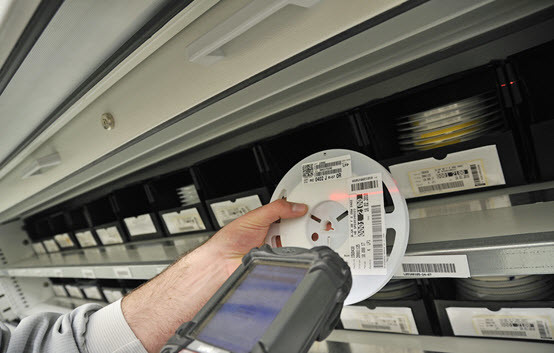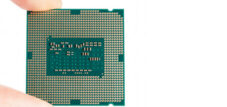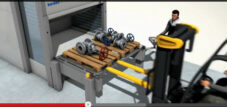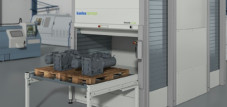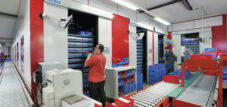Process description SMD handling
Language selection 📢
Published on: April 14, 2014 / Update from: April 24, 2021 - Author: Konrad Wolfenstein
[In collaboration with Kardex Remstar – ADVERTISING]
The initial situation for storing SMD rolls can be described as follows:
The customer stores a large amount of SMD rolls in their storage system. These rolls are then picked in combination with the company's warehouse management system.
1. Delivery
The process starts when an order for electronic circuit boards is received by the manufacturer, where the number of SMDs required is calculated. These are either already in stock or must be ordered separately. Based on this data, the expected production date is determined. Shortly before this point, the ERP system carries out a final automatic check to ensure that all components are actually available in the warehouse.
Problems:
The SMDs are mostly manufactured in Asia. Due to the long transport route, it is often necessary to keep supplies for a longer period of time
There are different formats for the rolls to which the SMDs are glued. Their diameter can vary between 7 and 22 inches, and their width ranges from less than 10 to over 200 millimeters. Depending on this, they can be stored next to, on top of or behind one another. This necessitates the need for a flexible storage system
- the shelf height to ensure access to rolls stored in rows of two
- the width of the holders in shelves for the various formats
- special requirements (storage of sensitive SMDs in dry cabinets)
2. Storage
SMD rolls can be stored in different ways. What is particularly important is that the components are stored while avoiding electrostatic charges in order to avoid damage.
Another problem that is becoming more and more prominent is the increase in moisture-sensitive components. It is therefore important to avoid the possible entry of moisture and the resulting increased probability of damage to the components during the soldering process. This danger can be avoided by suitable storage in drying cabinets or by using a modified and controlled atmosphere in the storage systems.
During storage, the incoming rolls are scanned and stored in the ERP system with information such as delivery time, order and material data, etc.
Based on the number of printed circuit boards produced, one can assume two different groups and requirement profiles for SMD handling:
- Producers of high volumes with short warehouse lead times. They can more easily access standard solutions for warehouse technology and software
- Producers of small series and prototypes. Due to the often small quantities, they face the challenges of more complex warehousing:
- For SMD rolls, only the standard components are provided. Other SMD components will only be ordered as soon as an order is received
- These SMD components are only stored temporarily
- Due to the higher warehouse complexity, this results in increased demands on order picking and ERP systems
3. Deployment
If all the components required for a production order are available in stock, the order-related picking process can begin
The SMD rolls are requested via the ERP system as soon as they are required for production. The rolls are prepared from the warehouse, removed from the trays/shelves and then manually tensioned onto the feeders. This is a standard procedure in which the process of unloading the rolls is separated from that of assembling them on the feeders. Manual use is necessary here, as threading the SMD tapes is currently difficult. difficult to solve automatically. The feeders are then driven to the production facilities and placed in the intended position.
Another option is to simultaneously outsource and assemble the rolls onto the feeders, which leads to significant time and therefore cost savings, but requires a higher degree of automation in storage and therefore higher investment costs.
The SMD rolls can also be removed from the trays fully automatically and transported for further processing. There they are manually brought to the feeders and made available.
As soon as the SMDs are ready for production, robots grab the components from the rolls and solder them onto the circuit boards. The components are removed with vacuum pipettes or grippers and then placed on the circuit board and soldered. This process is repeated for all components. After the circuit board is completely populated, it is replaced with the next one. If necessary, the circuit boards receive a protective coating after this process. The fully assembled circuit boards are then subjected to various tests and functional tests.
4. Re-storage
After the process has been completed, the ERP system provides detailed information
- used
- dropped (mistaken accesses) or
- damaged SMD
This process is referred to as “back flushing”. In the ERP system, the remaining quantities are now recorded in detail. Then the SMD roles are
- stored again
- transported to the next production equipment
- scrapped



